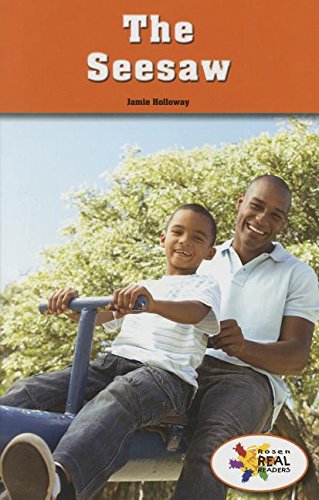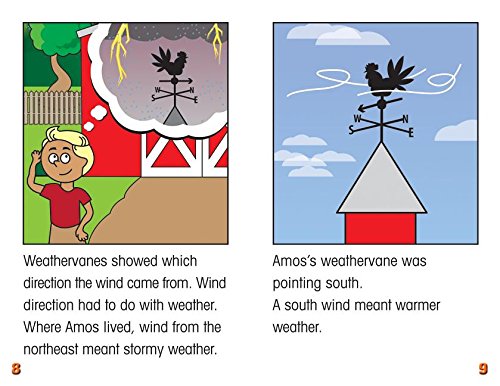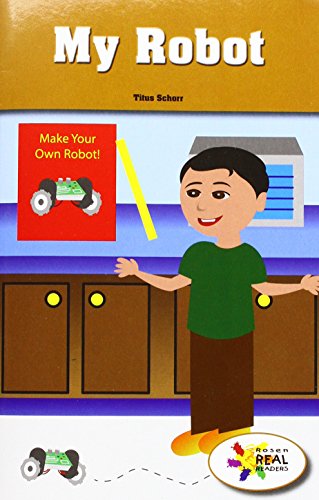-
Charlie's Sand Castle / Using Rough and Smooth Things to Make Art
Not Available
Paperback (Rosen Classroom, Aug. 15, 2016)Assembled together are one fiction and one nonfiction book, both explore the areas of the STEM and STEAM initiatives. Your student will read about the same subjects from two perspectives and two genres. Bright photographs and illustrations with tight image to text correlation make learning about cross-curricular topics fun. I
I
-
The Seesaw
Jamie Holloway
Paperback (Rosen Classroom, Aug. 1, 2015)Readers will learn the science of how seesaws function. The materials used to make seesaws are also explained. A picture-word glossary is included. L
L
-
Over and Under
Nancy Hicer
Paperback (Rosen Classroom, Jan. 15, 2015)Photo illustrations provide tight picture-text correlation to help emerging readers gain mastery over these prepositions and directional indicators. C
C
-
Building With Magnets
Josephine Masterson
Paperback (Rosen Classroom, Aug. 1, 2015)Science, engineering, and design are combined to explain the world of magnets. The science of magnetic forces is explained in a basic, easily comprehensible way. Then readers will be surprised to learn just how surrounded they are by the influence of magnets in daily life. P
P
-
The Windy Day
Jamie Holloway
Paperback (Rosen Classroom, Aug. 1, 2015)Our weather may change, but certain tools have stood the test of time. Amos introduces what a weathervane is, and how it interacts with wind. Readers learn about directions, and how wind coming from certain directions mean certain things. This fiction title is paired with the nonfiction title "Weathervanes" for connecting across texts and comprehension through connection strategies. L
L
-
Flowers in My Garden
Henrietta M. Lily
Paperback (Rosen Classroom, Jan. 15, 2015)This nonfiction text provides basic life science information about gardening. Close text-photo correlation helps emerging readers navigate a first-person narrative account of how a garden is planted. E
E
-
Tadpoles and Frogs
Carter Hayn
Paperback (Rosen Classroom, Jan. 15, 2015)Strong photo illustrations provide grade-appropriate, curriculum-mandated nonfiction information on the life cycle of a frog. This title illustrates cause-and-effect relationships and educates young readers in basic animal behavior. J
J
-
Daylight in Winter, Summer, Fall, and Spring
Wayan James
Paperback (Rosen Classroom, Aug. 15, 2016)This STEM and STEAM book provides emerging readers the chance to experience a range of science, technology, engineering, art, and math subject matter at their ability level. Engaging, narrative nonfiction is used to provide students with a distinct point of view. O
O
-
A Playground Adventure / the Slide at School
Not Available
Paperback (Rosen Classroom, Aug. 15, 2016)Assembled together are one fiction and one nonfiction book, both explore the areas of the STEM and STEAM initiatives. Your student will read about the same subjects from two perspectives and two genres. Bright photographs and illustrations with tight image to text correlation make learning about cross-curricular topics fun. D
D
-
Our Classroom Library
Henrietta Lily
Paperback (Rosen Classroom, Jan. 15, 2015)This vivid narrative nonfiction title explores students use of their classroom library. Readers experience students choosing texts and reading alone and together, as well as participating with their teacher in small-group instruction. F
F
-
Sunflowers Need the Sun
Branca Tani
Paperback (Rosen Classroom, Jan. 15, 2015)This descriptive title provides strong sequential action in the growth of a sunflower plant from seed to flower. The kid-friendly context provides many opportunities to explore how things grow. H
H
-
My Robot
Titus Schorr
Paperback (Rosen Classroom, Jan. 15, 2016)In this fictional narrative, Theo will build his own robot and program it to move in certain directions. Domain-specific vocabulary and colorful illustrations will familiarize readers with key building terms. Theo will learn that following directions is important and that he can build a robot. This fiction title is paired with the nonfiction title I Can Build a Robot. M
M